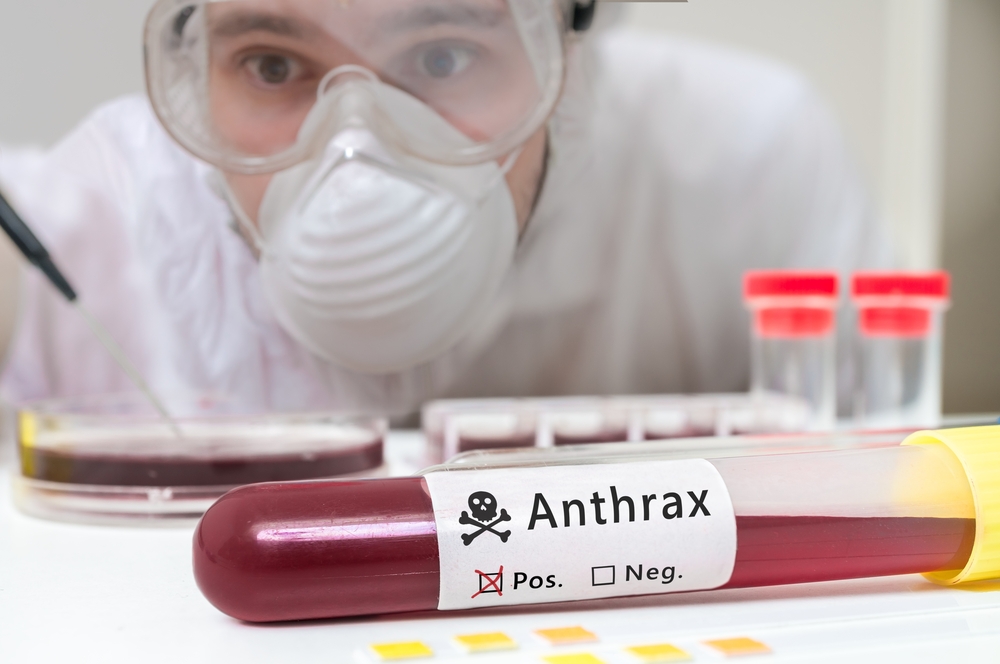There are four forms of disease caused by anthrax:
- Cutaneous anthrax– affects the skin. The illness usually resolves in about six weeks. Deaths may occur if patients do not receive appropriate antibiotics.
Symptoms: muscle aches and pain, headache, fever, nausea, and vomiting.
- Injection anthrax– a new form of anthrax that has been identified in heroin-injecting drug users in northern Europe.
Symptoms: small blisters or bumps that may itch at the injection site, fever and chills, swelling around the sores, and deep abscesses may develop under the skin or muscle. Painless skin sores with black centers (dark scabs) may appear after the blisters or bumps develop.
- Inhalation anthrax- affects the lungs.
Symptoms: subtle, gradual and flu-like (influenza) with a sore throat and headaches. In a few days, however, the illness worsens and there may be severe respiratory distress with shortness of breath and pain in the chest and/or muscles. Some patients may begin coughing up blood. Shock, coma, and death follow.
- Gastrointestinal anthrax- affects the digestive tract and caused by eating infected meat.
Symptoms: nausea, loss of appetite, bloody diarrhea and fever followed by abdominal pain.


